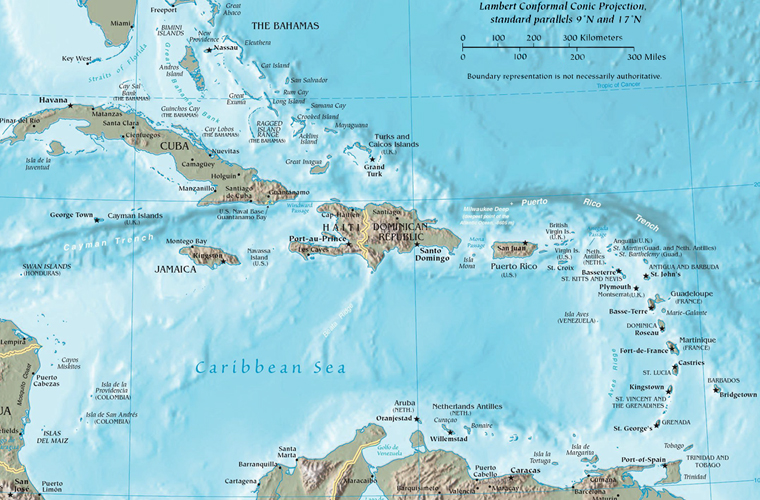The Caribbean is a region of islands and coastal territory in the Americas that is roughly defined by its interaction with the Caribbean Sea. The earliest interactions between Europeans and indigenous peoples in the New World took place in the Caribbean, as Columbus first made landfall in the region and sparked subsequent exploration and contact.
Beginning in the late fifteenth and early sixteenth centuries, Europeans began to exploit the region for mineral and agricultural production, launching unprecedented demographic changes as indigenous people were systematically replaced with people of African origins. Defining the Caribbean is difficult, as each island, place, and people has followed a unique trajectory to the present. In general, however, it is possible to identify a few patterns in land, labor, and history.
One pattern is a process of demographic collapse as a consequence of European and African (Old World) diseases being brought to the New World. Estimates vary wildly, but most scholars agree that native Caribbean populations exceeded several million before contact, and declined rapidly—perhaps as much as 90 percent in some places—within the first century after European arrival. Warfare accounted for some of this decline, but the primary cause was the unintentional introduction of pathogens like influenza and smallpox (to name only two). Facing an insufficient indigenous labor supply, Europeans began to import African laborers through the transatlantic slave trade.
A significant African-descended population is another feature of the Caribbean. Over the long course of the slave trade, slave merchants delivered more than four million Africans to the Caribbean. These populations led to the growth of multiracial societies in the region, many of which have hybrid African-European-indigenous cultural traits.
Enslaved and unfree workers worked within a system—whether in gold or silver mines or on sugar, coffee, or cotton plantations, for example—that was designed to extract wealth from the region for export to Europe. These generally created relationships in which Caribbean territories were subordinate to European nations. Elements of this pattern would continue through much of the region’s history. Nevertheless, the Caribbean was the site of several independence movements—one notable example of which is the slave revolution in Saint-Domingue that led to the emergence of the Republic of Haiti.

